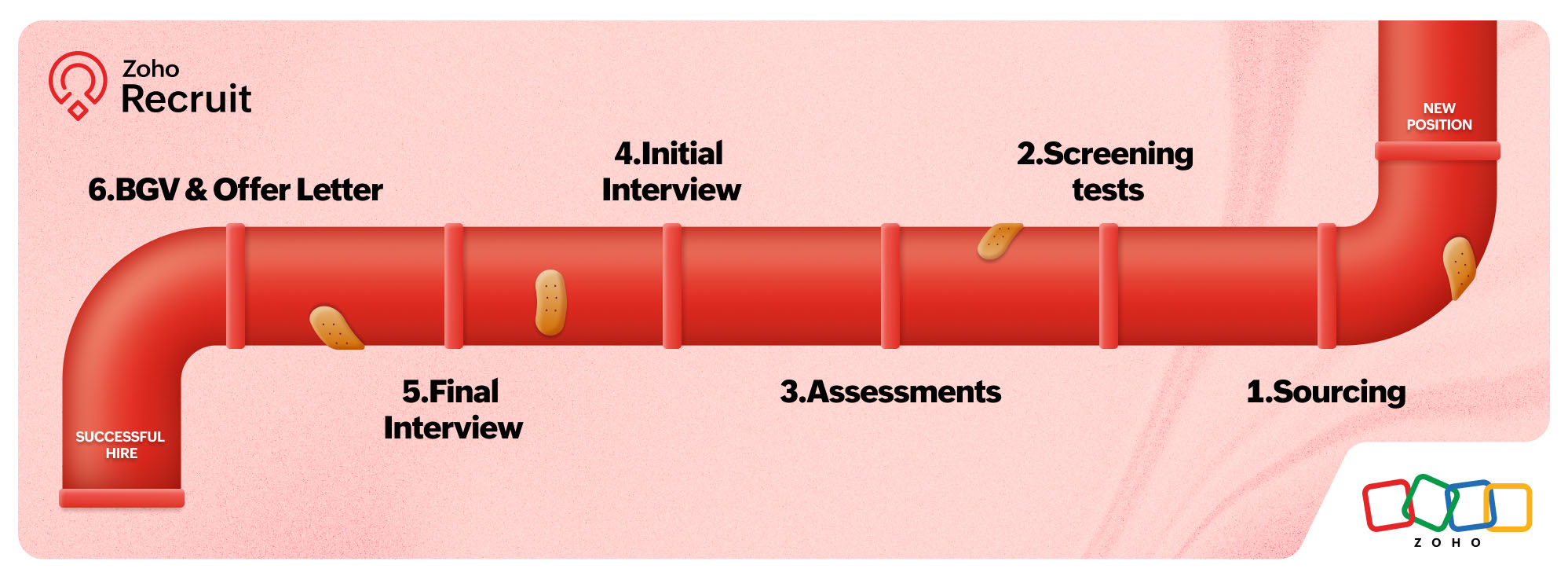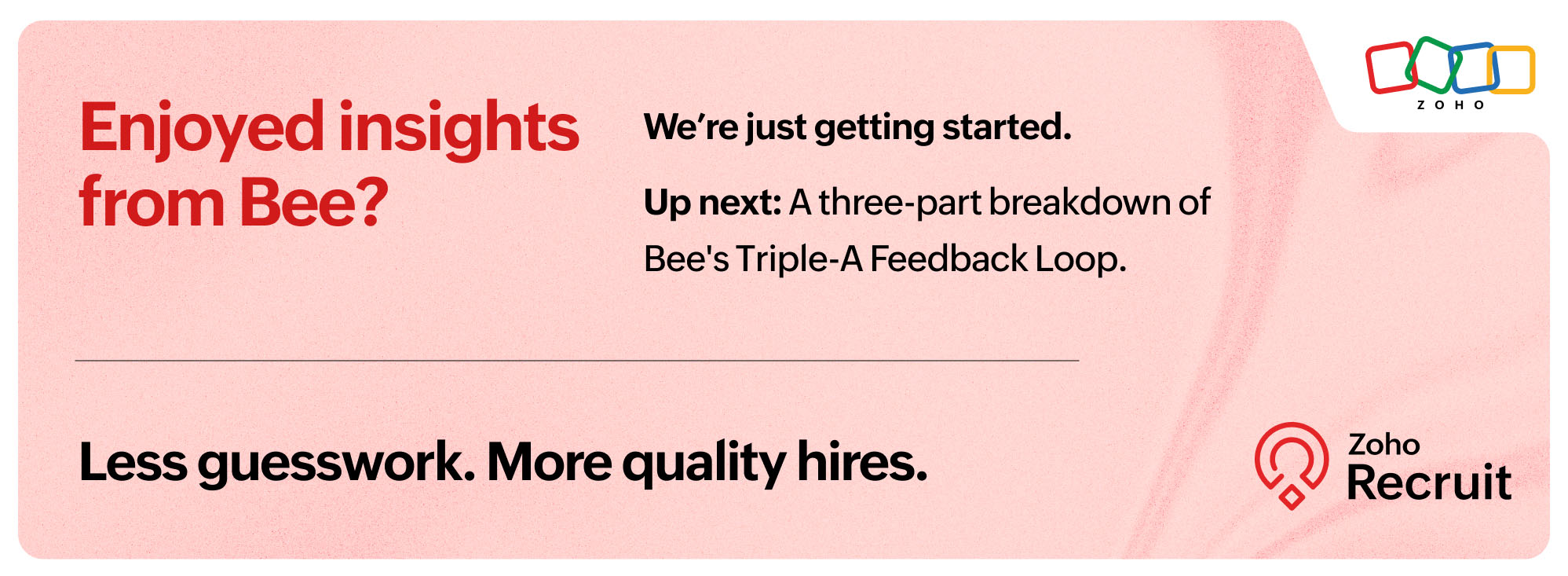Hi, it's Bee again, back with another insight from the recruitment world.
Our recent job posting brought in thousands of applications. The talent pool grew and demanded an extra space in our database. Sounds like a recruiter's dream, right?

Here's the catch:
- Very few applications turned out to be quality hires. The rest came with major skill gaps, mismatched profiles, or incomplete information.
- The “talent pool” turned out to be a noisy and cluttered inbox.
- The drop-off rates were alarmingly high and almost random. Candidates were dropping off right from the applications stage. Worse, some even ghosted after accepting the offer letter.
Our hiring pipeline looked full, but in reality, it was leaking talent at every stage.
What did we do?
Something wasn’t adding up. During an SOS brainstorm with my team, we realized we had been ignoring something right before our eyes - the growing pile of candidate feedback forms. We found that we are assuming, second-guessing, and overlooking this treasure trove of data. So, instead of pointing fingers, we decided to do something more constructive.
We asked the experts: the candidates themselves. Only this time, we equipped the feedback forms with actionable questionnaires designed to improve our hiring process.
How did we go about it?
We created three different, actionable candidate feedback loops for the three important stages of hiring:
- Awareness feedback at the application stage
- Assessment feedback at the assessment stage
- Acceptance feedback at the offer stage
We collected the input, analyzed for insights, and refined our hiring strategy to improve the quality of hires. Here's a detail breakdown of our whole process inside Zoho Recruit.
1. The Awareness feedback
This stage covers the candidate journey from discovering the job to submitting their application. We were receiving too many junk applications while the number of quality resumes reaching hiring managers was steadily declining. To zero in on the root cause, we compared our ATS data with candidate feedback.
Resulting insights:
- We found that many drop-offs were from mobile users.
- Candidates were not clear about the job's nature and the skills it demanded.
What did we do?
- We optimized our career site for mobile with Zoho Recruit so that all candidates had easy access to the application.
- We went back to the drawing board and fixed job descriptions with clearer, bulleted expectations and a proper introduction to our company's business model.
2. The Assessment feedback
This stage captures the candidate journey from taking assessments to completing their initial round of interviews. Once we repaired the application stage, we asked crucial questions as soon as candidates finished their assessments.
These questions focused on how candidates felt during interviews, communication gaps, and the impact the recruiter left. We kept comparing data points to analyze insights and adopt solutions.
Resulting insights:
- Many candidates felt like the interviews themselves were rushed, while there were long gaps between interview rounds.
- Most candidates assumed they were rejected because no one followed up after their assessments and moved on to other offers.
What did we do?
- I teamed up with hiring managers to set ideal turn-around and buffer times between the interviews.
- We sent an automated follow-up email after the assessments appreciating the candidates' efforts and time, and gave them a heads-up about the turn-around time.
3. The Acceptance feedback
This is where some of the most insightful candidate feedback surfaces. It captures their experience from attending interviews to receiving an offer. It's understandable for candidates to turn down the offer. But it's also a golden opportunity to gather insights and build a high-quality passive talent pool.
Resulting insights:
- Candidates chose other offers with better perks and incentives.
- Some felt the offer didn’t align with what was discussed during the interview and were asked to repeat information from earlier stages.
What did we do?
- We went back, researched current market offerings, and revised our salary structure, perks, and incentives to stay competitive.
- I also created a feedback loop with our HR and hiring teams to refine offer negotiation practices and make sure everyone had the full picture on each candidate.
Bonus: With Zoho Recruit’s Interview Kit, my hiring managers didn’t have to dig through emails or click through ten tabs. Everything they needed, from candidate resumes to evaluation criteria, was in one place.
How Zoho Recruit helped rebuild our hiring pipeline
Once we built our Triple-A feedback loop—from application to interview to offer—it was time to stop doing things manually and start building a system. I didn’t just want feedback. I wanted continuous learning. Here's how we made it happen:
Automate with workflows
In Zoho Recruit’s workflow, I've added Zoho Survey links to each stage's communication emailers - application, interview, and offer. Now, candidates receive the feedback surveys at the right time, automatically. No manual work. Just timely, targeted emails with candidate feedback surveys.
Map insights
We kept tabs on the Zoho Survey's analytics and reconciled it with existing insights from Zoho Recruit to predict patterns and uncover bottlenecks.
From leaks to leads
Even if the top talent doesn’t join us today, how we treat them now decides whether they will return tomorrow. What started as a messy funnel turned into a sustainable hiring system. We didn’t just patch the leaks—we rebuilt the pipeline with relevant data. Now, our processes are streamlined, more quality candidates are coming in, and we have a thriving passive talent pool. What's better? The hiring managers are happier than ever!
Happy hiring.







Comments